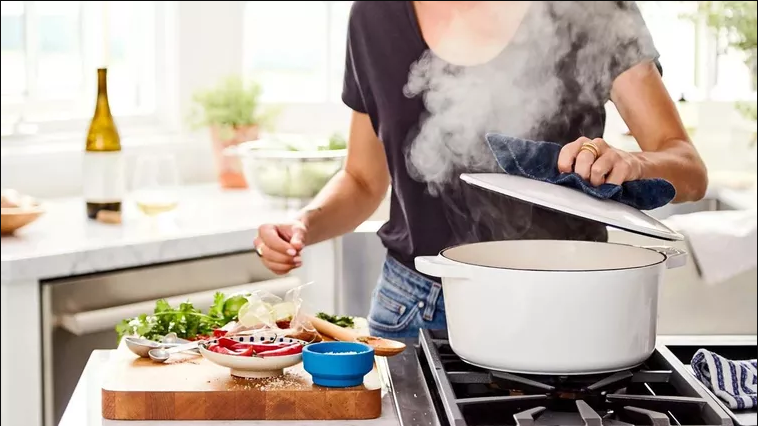What Are Dutch Ovens?
Dutch ovens are cylindrical, heavy gauge cooking pots with tight-fitting lids that can be used either on a range top or in the oven. The heavy metal or ceramic construction provides constant, even, and multi-directional radiant heat to the food being cooked inside. With a wide range of uses, Dutch ovens are truly an all-purpose piece of cookware.
Around the World
Dutch ovens, as they are called in the United States today, have been used for hundreds of years, in many different cultures, and under many names. This most basic piece of cookware was originally designed with feet to sit above hot ashes in a wood or coal burning fireplace. The lids of Dutch ovens were at one time slightly concave so that hot coals could be placed on top to provide heat from above as well as below. In France, these multi-use pots are known as cocottes, and in Brittan, they are known simply as casseroles.
Uses
Modern Dutch ovens can be used on a stovetop similar to a stockpot or in the oven like a baking dish. The heavy gauge metal or ceramic can withstand a wide range of temperatures and cooking methods. Almost any cooking task can be performed in a Dutch oven.
Soups and stews: Dutch ovens are perfect for soups and stews because of their size, shape, and thick construction. The heavy metal or ceramic conducts heat well and can keep food warm for long periods of time. This is useful for long-simmering soups, stews, or beans.
Roasting: When placed inside an oven, Dutch ovens conduct heat and transfer it to the food inside from all directions. The ability of the cookware to hold this heat means that less energy is required for long, slow cooking methods. The ovenproof lid helps retain moisture and prevents drying during long cooking times. This makes Dutch ovens perfect for slow roasting meats or vegetables.
Frying: The ability to conduct heat is the star again when it comes to using a Dutch oven for deep-frying. Dutch ovens will heat oil evenly, allowing the cook to closely control the temperature of the fry oil. There are some enameled Dutch ovens should not be used with the high temperatures used in deep frying, so be sure to check with the manufacturer.
Bread: Dutch ovens have also long been used to bake bread and other baked goods. The radiant heat acts similarly to a stone hearth of a bread or pizza oven. Furthermore, the lid holds in moisture and steam, which creates a desirably crispy crust.
Casseroles: The ability of a Dutch oven to be transferred from a stovetop to inside an oven makes them the perfect tool for casseroles. Meats or aromatics can be sautéed in the Dutch oven while on the stovetop, and then the casserole can be assembled and baked in the very same pot.
Varieties
Modern Dutch ovens can be divided into two basic categories: bare cast iron or enameled. Each has its own set of advantages, disadvantages, and best uses.
Bare cast iron: Cast iron is an excellent conductor of heat and is the preferred cookware material for many chefs. The metal can withstand extremely high temperatures without degradation, making it useful for a wider variety of applications. As with all cast iron cookware, special cleaning and care must be taken to preserve the integrity of the iron. If cared for properly, a good cast iron Dutch oven can last generations. Cast iron Dutch ovens are commonly used for camping as they can be placed directly over an open flame.
Enameled: Enameled Dutch ovens can have a ceramic or metal core. Like cast iron, ceramic conducts heat extremely well and is therefore often used to make Dutch ovens. Enameled Dutch ovens require no special cleaning techniques, which makes them perfect for those seeking convenience. Although enamel is extremely durable.
Post time: Jul-13-2020







